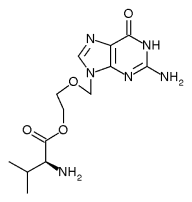GAITHERSBURG, MD. -- A federal advisory panel has recommended that suppressive therapy with valacyclovir be approved for reducing the risk of genital herpes transmission from infected to uninfected sexual partners.
The Food and Drug Administration's Antiviral Drugs Advisory Committee voted 13-0 to support use of the drug for this indication in monogamous, heterosexual couples. The FDA usually follows the recommendations of its advisory panels, which are not binding.
The panel based its decision on a landmark study that found sup pressive treatment of infected partners over an 8-month period reduced the transmission of symptomatic genital herpes to uninfected partners by 75%. Study participants were heterosexual, monogamous, immunocompetent couples.
Several panel members said the approval should extend to both heterosexual and homosexual couples; other panelists disagreed, citing a lack of data to guide treatment in populations other than the one enrolled in the study.
Panelists also cautioned that the results should not be applied to immunocompromised individuals, who may have higher viral burdens, but they added that this approach should be studied in this population.
The pediatrician on the panel, Dr. Janet Englund, said that in adolescents suppressive therapy would be an "important adjunct" to condom use in reducing transmission.
But long-term safety and efficacy data on this approach are needed in this age group, added Dr. Englund of Children's Hospital and Regional Medical Center, Seattle.
GlaxoSmithKline, which markets valacyclovir as Valtrex, has not done a study of the drug in adolescents.
Valacyclovir, an antiviral agent with activity against herpes simples virus type 1 (HSV-1), HSV type 2, and varicella zoster virus, is currently approved for the treatment or suppression of genital herpes in otherwise healthy people and suppression of recurrent genital herpes in HIV-infected individuals.
The international study enrolled more than 1,000 people with recurrent genital herpes (nine or fewer episodes a year) who were candidates for suppressive therapy and their susceptible partners who had no history of genital herpes and were seronegative.
The rationale behind using valacyclovir to reduce transmission rates is that the drug suppresses recurrences and reduces viral shedding, said Dr. Stuart Harding of GlaxoSmithKline.
Infected partners were treated with 500 mg of valacyclovir or a placebo daily for 8 months; couples were counseled at entry on how to prevent HSV-2 transmission and at monthly visits received more counseling and were offered condoms, which are partially effective in preventing transmission.
Of the 1,426 couples who completed the trial, 20 susceptible partners developed signs and symptoms of genital herpes confirmed by a laboratory test. Sixteen (2.2%) were among the 741 participants whose partners were on placebo, and the remaining 4 (0.5%) were among the 743 whose partners were taking valacyclovir. The difference in transmission rates between groups was statistically significant and represented a 75% reduction in risk.
When asymptomatic infections were included, the reduction in risk was not as great but was still significant: 24 (3.2%) of the susceptible partners in the placebo group seroconverred vs. 12(1.6%) in the treatment group--a 50% reduction in risk.
Headaches and nasopharyngitis were the most commonly reported side effects. Some panelists were concerned about the high drop-out rate in the study, which was more than 20%, and had reservations about geographic differences in results and the preponderance of whites who enrolled in the study.
One panel member raised the issue of affordability of continuous therapy and cost-effectiveness, topics that are not included in the agenda of FDA advisory panels.
GlaxoSmithKline officials said they had no cost-benefit analysis data, but several panelists referred to the economic benefits of preventing HIV or neonatal infections by reducing HSV-2 transmission. Dr. Englund remarked that the considerable costs of one case of neonatal herpes should be factored into any such cost analysis.
COPYRIGHT 2003 International Medical News Group
COPYRIGHT 2003 Gale Group



